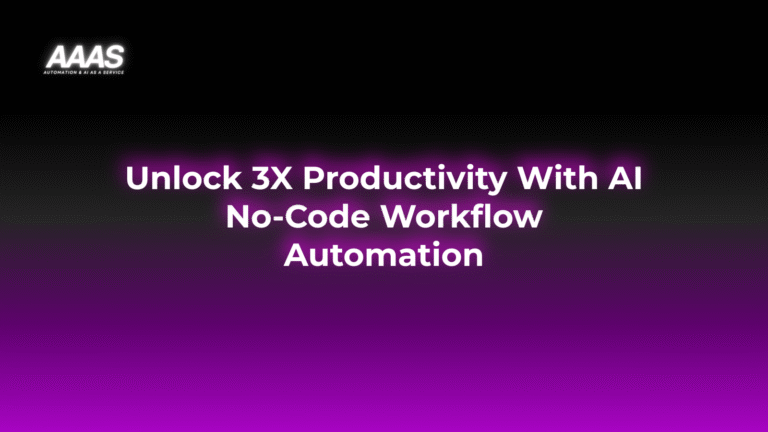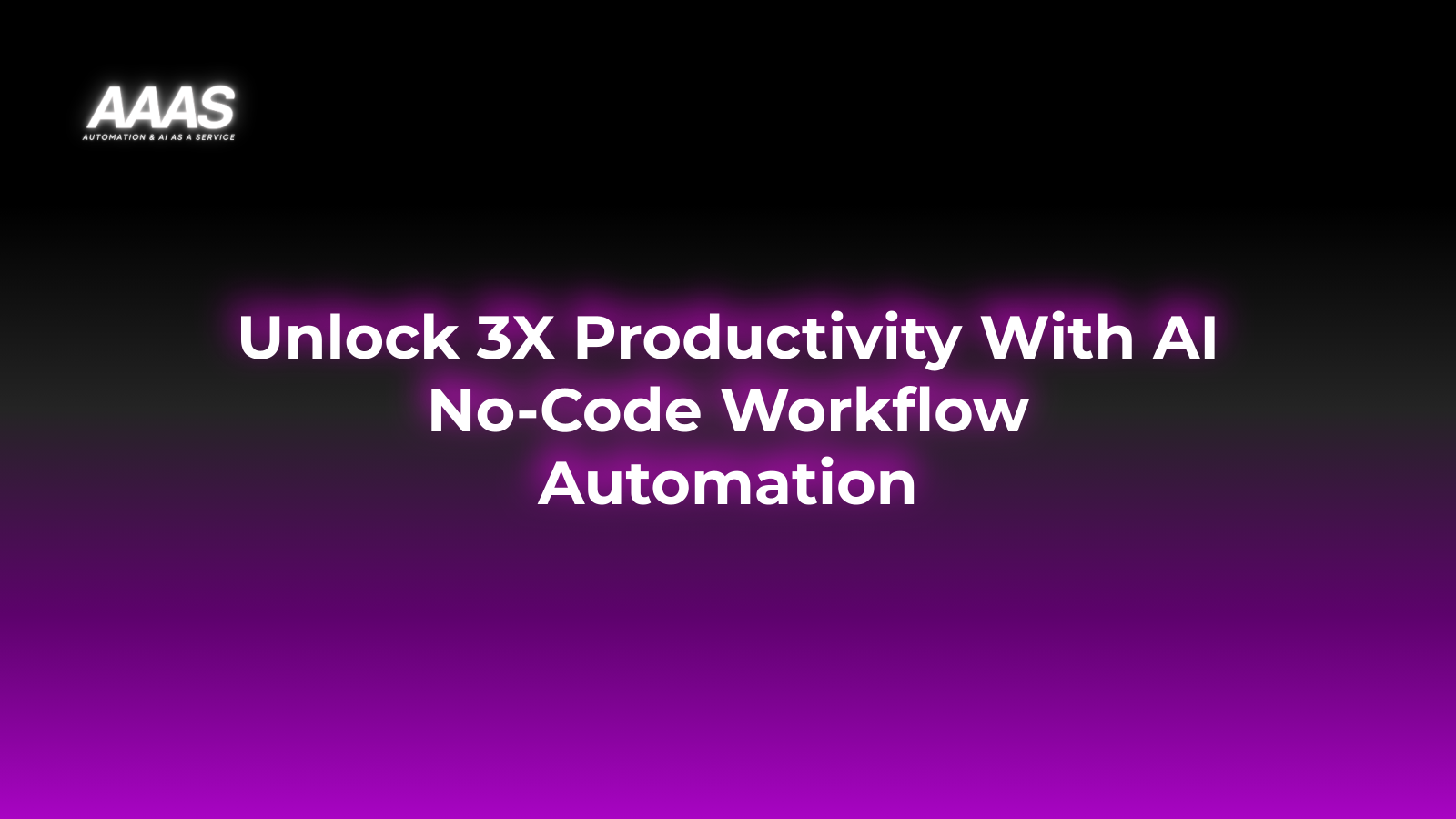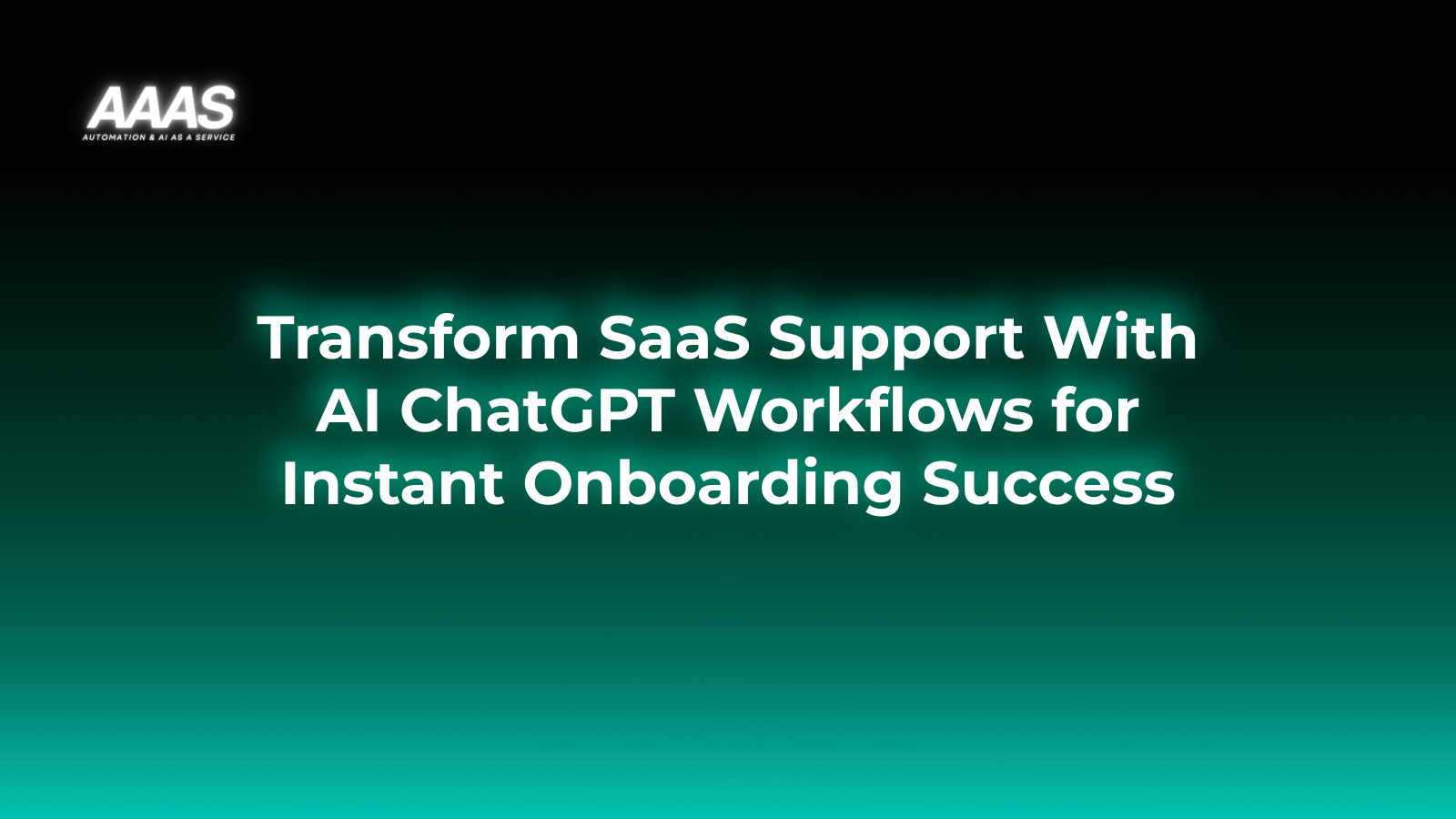Leveraging AI-Powered No-Code Workflow Automation Platforms for Business Growth

Last updated: November 18, 2025
The Market Problem: Manual Workflows Hinder Growth
Many businesses still rely on manual processes and traditional software for core operations—resulting in:
- Time-consuming repetitive tasks
- Human error and inconsistent output
- Difficulty scaling operations
- Delayed decision-making
- High operational costs
Productivity loss and inefficient workflows are significant barriers to sustainable business growth. Leaders need better ways to automate, optimize, and intelligently orchestrate processes with minimal IT involvement.
The Solution: AI-Powered No-Code Workflow Automation
AI-powered no-code workflow automation platforms empower teams to digitize, automate, and orchestrate complex business processes—without coding skills or developer resources.
Key Benefits
- Increased Productivity: Automate repetitive tasks to free up employee time for higher-value work.
- Enhanced Efficiency: Streamline operations, reduce manual intervention, and improve process accuracy.
- Cost Savings & ROI: Lower operational overheads and optimize resource allocation, boosting return on investment.
- Agility: Enable rapid process changes and adaptations as business needs evolve.
- Democratized Innovation: Empower non-technical teams to build and deploy solutions faster.
Popular examples include Zapier, Make (formerly Integromat), Microsoft Power Automate, and n8n.
Real-World Use Cases
-
Lead Management Automation
Automatically capture leads from web forms, qualify using AI scoring, and route to sales CRM. Reduces lead response time and increases conversion rates.
-
HR Onboarding Flows
Trigger document collection, assign training, and provision accounts when a new hire joins—streamlining onboarding for both HR and employees.
-
Invoice Processing
Extract invoice data via AI-powered OCR, validate, and sync with financial software for fast, error-free reconciliation.
-
Customer Support Routing
Use NLP to categorize support tickets and auto-assign to the right department, cutting response time and improving customer satisfaction.
-
Marketing Automation
Combine AI and workflow triggers to launch personalized campaigns, segment audiences, and report on campaign ROI in real time.
Technical Details & Platform Capabilities
No-Code Design
Visual drag-and-drop interfaces let users assemble workflows by selecting triggers, actions, conditions, and AI tools—with zero code.
AI Integration
- Natural language processing (NLP) for text analysis and routing
- AI-driven document recognition and data extraction
- Predictive analytics and process optimization
- Integration with GPT-based or cloud AI models for automation scripting
Extensibility & Security
- Integration with hundreds of SaaS apps via secure APIs
- Role-based access, audit logs, and compliance adherence (GDPR, SOC2, etc.)
- On-premises or cloud deployment options
For technical specifics on workflow orchestration, see [InternalLink:workflow-orchestration-guide|Workflow Orchestration Fundamentals].
Comparison with Alternatives
| Solution Type | AI Support | No-Code? | Scalability | Typical User |
|---|---|---|---|---|
| AI-Powered No-Code Automation | Advanced (native, plug-and-play) | Yes | High | Non-tech users, business ops, SMEs |
| Traditional RPA (Robotic Process Automation) | Limited (rule-based) | No | Medium | IT automation teams |
| Bespoke Software Development | Custom | No | Highest | Large orgs, dev teams |
| Manual Workflows | None | Yes | Low | All, but not scalable |
Pricing Table: Leading Platforms (2025)
| Platform | Free Tier | Paid Plans | AI Features | Notes |
|---|---|---|---|---|
| Zapier | Yes | From $19.99/mo | AI-powered actions, GPT integrations | Best for SMBs |
| Make | Yes | From $9/mo | Custom AI modules, visual builder | Flexible, scalable |
| Microsoft Power Automate | Limited | From $15/user/mo | AI Builder, Azure integration | Enterprise ready |
| n8n | Yes (self-hosted) | From $20/user/mo | Open-source, AI node support | No vendor lock-in |
ROI-Focused Practical Examples
- SMB Lead Response: Automating lead assignments improved response times by 65% and resulted in a 24% increase in closed deals within six months (Forrester TEI of Zapier).
- Document Handling: AI-powered invoice processing workflows reduced manual work by 80%, saving an average of 22 hours/month per accountant.
- Support Ticket Routing: Automating support email triage cut average resolution time by 40% and reduced SLA breaches by half.
How to Set Up AI No-Code Workflow Automation
- Identify repetitive business processes and pain points.
- Choose a platform based on your team’s needs, existing tools, and AI readiness.
- Map out workflow logic using visual tools.
- Integrate with current software (CRM, ERP, email, etc.).
- Leverage AI modules for smart triggers, routing, or document handling.
- Test and optimize workflows regularly for accuracy and ROI.
- Train team members for adoption and scaling automations.
Pros and Cons
| Pros | Cons |
|---|---|
|
|
Expert Tips for Maximizing Value
- Start with small, high-impact workflows for quick wins.
- Continuously monitor and measure workflow performance and ROI.
- Document standards and workflow ownership for maintainability.
- Regularly review platform security and compliance features.
- Engage cross-functional teams in automation initiatives to uncover more opportunities.
Frequently Asked Questions
- What is a no-code workflow automation platform?
- A SaaS tool that enables users to create and operate automated workflows through visual interfaces, without programming knowledge.
- How does AI enhance workflow automation?
- AI adds intelligence—such as pattern recognition, natural language understanding, and predictive analysis—to automate decisions and reduce manual data entry or routing.
- Is no-code automation secure?
- Top platforms offer advanced security, encryption, user management, and compliance certifications, but always review your provider’s details.
- Can I integrate with my legacy systems?
- Most platforms support integrations via APIs, connectors, and webhook interfaces, supporting both SaaS and on-premises apps.
- What is the typical ROI?
- ROI varies with process complexity, but businesses often see time savings of 30-80%, rapid error reduction, and fast payback—sometimes in under three months (Gartner).
References & Citations








